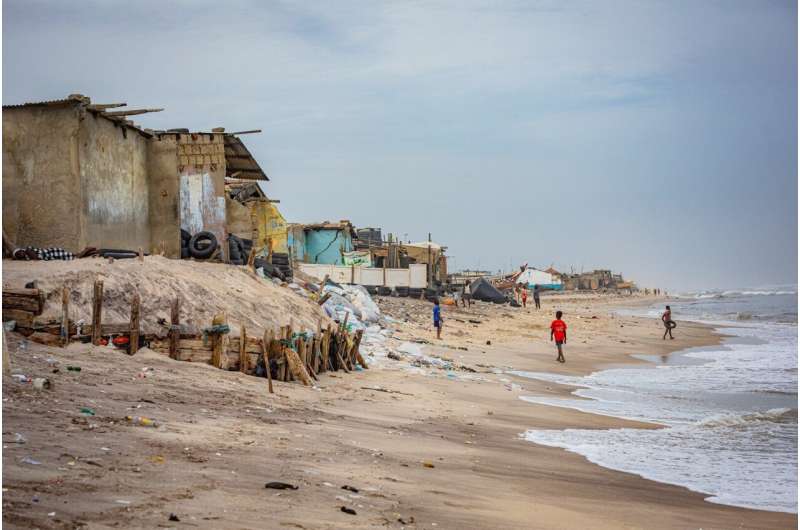This article has been reviewed according to Science X's editorial process and policies. Editors have highlighted the following attributes while ensuring the content's credibility:
fact-checked
peer-reviewed publication
proofread
How to adapt to climate change, and how not to

With the impacts of climate change increasing around the world, efforts to adapt human infrastructure and practices might seem to be an unalloyed good. But there is such a thing as maladaptation. Much as medications have side effects, some adaptations turn out to do more harm than good, or at least enough harm that the negative effects must be weighed against the positives.
A new paper in the journal Nature Climate Change examines this issue and establishes an approach for assessing adaptation activities. One bottom-line result: infrastructure projects in general carry the most risks of maladaptation, while shifts involving changes in diet and restoration of natural areas carry the least.
The paper cites, for instance, seawalls. It points out that such structures might work at least for a while, but end up luring people to areas that are still exposed to sea-level rise. They may also serve as dams that trap floodwaters from rivers swollen by heavy rains.
On the same note, irrigation systems in poor, drought-stricken areas might turn out to favor only the farmers wealthy enough to afford them. This could lead to the concentration of land in the hands of a few, or lead farmers to abandon subsistence crops and specialize in a single cash crop, reducing their resilience to future climate shocks.
References to maladaptation began to appear in the scholarly literature in the mid-2010s. Since 2020, the term has been used more regularly. However, it has generally been treated as the opposite of adaptation, with activities described either as adaptative or maladaptative.
This dichotomy was challenged in the 2022 report on impacts and adaptation from the Intergovernmental Panel on Climate Change. That report uses the word "continuum," suggesting that no action is entirely good or bad. It may seem like splitting hairs to distinguish between a dichotomy and a continuum, but the difference is large. Modern medicine recognizes that drugs cannot be divided into safe and dangerous; rather the risks of side effects must be carefully weighed against the benefits. So too, society must assess the risks posed by adaptation activities.
The new study's lead author, Diana Reckien of the Netherlands' University of Twente, and her co-authors, including myself, constructed a measure to locate adaptation activities on the continuum. We examined six factors.
Three are system-level features: whether an activity will affect ecosystems positively or negatively; whether it will increase or decrease concentrations of greenhouse gases; and whether it does or does not have the potential to lead to transformational changes of social systems.
The other three are equity-related considerations: whether the adaptation benefits, has no effect on, or worsens the situations of marginalized groups—low-income populations, women and girls, and marginalized ethnic groups. The average score across these six dimensions provides the location of an activity on the continuum.
To put some empirical flesh on these conceptual and methodological bones, the study selected eight sectors that face major climate impacts, including coastal zones, human health and food security. It analyzed three established adaptation responses to each, for a total of 24 responses. None of the results were located at one or other end of the continuum, but ranged across much of its breadth.
The strongest potential for successful adaptation is found in the responses based on social and behavioral systems. These include dietary shifts and reduction of food waste, as well as increasing of social safety nets. The also include options that center on nature and ecosystems, such as improved farm and fishery practices, and restoration of natural areas.
Infrastructure presented higher risks of maladaptation, such as unintended flooding. In some instances, insurance programs also can create negative outcomes when they exclude marginalized groups or limit the potential of social transformation by strengthening the status quo.
The study emphasizes that the responses are not permanently fixed at one point or another on the continuum, and suggests that the continuum framework can be used to guide adaptation activities away from the maladaptation pole. For example, insurance and coastal projects can shift toward the positive if designers consider possible negative ecosystem or equity consequences.
We hope this framework will contribute to the first "global stocktake" of progress on climate action at COP28 this year, which will assess progress on the global goal on adaptation laid out in the Paris Agreement of 2015. And hopefully it will contribute to the adaptation planning taking place in local, national and international settings around the world.
More information: Diana Reckien et al, Navigating the continuum between adaptation and maladaptation, Nature Climate Change (2023). DOI: 10.1038/s41558-023-01774-6
Journal information: Nature Climate Change
Provided by State of the Planet
This story is republished courtesy of Earth Institute, Columbia University http://blogs.ei.columbia.edu.





















